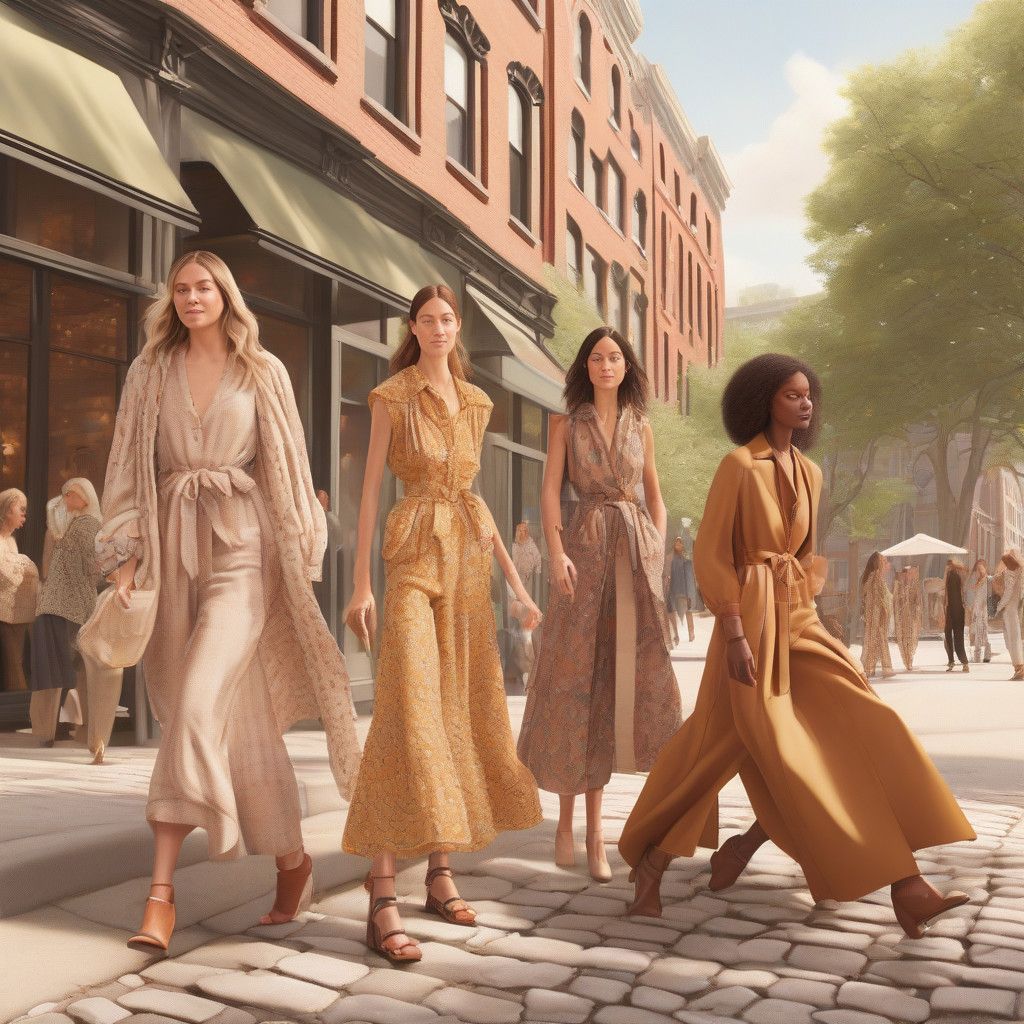In the bustling heart of New York City, where the color black dominates the fashion scene, Ulla Johnson emerges with a refreshing contrast: vibrant designs steeped in cultural significance. While many luxury brands sought to navigate the understated elegance of recent trends, Ulla Johnson’s creations continue to dazzle with bold patterns sourced from the artisans of India and Kenya. Breaking free from the rigid aesthetics characteristic of traditional New York fashion, Johnson’s work is a tribute to femininity, showcasing floral prints, flowing skirts, ruffles, and intricate lacework.
Ulla Johnson’s distinctiveness, she asserts, is her greatest strength. “Our aesthetic is incredibly clearly defined and recognizable,” she shared with The Business of Fashion. This clarity not only helps set her apart in a competitive landscape but also fosters a deep connection with her clientele, who can instantly identify her garments. This unique identity has allowed her brand to flourish, even during challenging economic times.
Since launching her fashion line over 25 years ago, Johnson’s journey has been characterized by steady growth rather than explosive leaps. She refrained from opening her first retail store until 2017, and notably, she has never sought outside investment. This self-reliance has allowed her to maintain control over her creative vision. “At a time when fast fashion was exploding, we were committed to slow fashion,” Johnson explained, admitting that this dedication has posed challenges but ultimately positioned her brand for success as consumer preferences shifted.
The past few years have been particularly rewarding for Johnson. Her company has seen over 130 percent growth since 2020, reaching impressive nine-figure sales—a rare achievement within New York’s fashion industry. Celebrities including Katie Holmes, Margot Robbie, and Michelle Obama adorn her designs, enhancing brand visibility and desirability. This year marked a significant change in business strategy, as the label transitioned to a majority direct-to-consumer model, with 55 percent of sales now stemming from online platforms and three physical stores—a figure she aims to increase.
In an industry where some brands face closures despite similar sustainable approaches, Ulla Johnson’s trajectory remains astoundingly positive. Take, for instance, Mara Hoffman, established the same year as Johnson’s brand, which recently faced bankruptcy. In contrast, the Australia-born Zimmermann, founded in 1991, made headlines by selling for $1 billion to private-equity firm Advent International in 2023.
Thibaut Perrin-Faivre, who recently joined Ulla Johnson as president, envisions substantial growth opportunities. Identifying potential new markets and new product categories, Perrin-Faivre highlights beauty products like fragrances as a logical next step. With international sales already contributing 30 percent, plans for further brick-and-mortar expansion are also in the works.
Patience and measured growth form the bedrock of Johnson’s brand philosophy. “I’ve observed numerous brands that experienced rapid growth and then faded away,” noted Perrin-Faivre. “Ulla is cautious about growth, prioritizing brand equity preservation over speed.” Johnson launched her label in a different era, a time when luxury companies were beginning to consolidate, and independent designers could carve out their space without overwhelming competition.
Her initial foray began in a friend’s boutique with just five pieces. The positive reception of her second collection caught the eye of a buyer from the now-defunct Barneys New York. For years, Johnson’s small collections cultivated customers quietly, and she didn’t showcase at New York Fashion Week until 2014, finally presenting a full runway show in 2017. “That was a pivotal moment for our creative output,” she reflected.
As opposed to major competitors who focus on delivering perfect basics, Ulla Johnson captivates with standout pieces. Examples include the Kamaria sweater dress—handmade from crocheted paisley—and the fleece Calla sweatpant featuring a unique lace-up front. While her prices sit between $250 and $1,000, they remain competitive for luxury yet distinct from contemporary market offerings.
Importantly, Johnson aims to help women feel empowered through her designs. Rather than subscribing to mainstream definitions of power dressing, her garments celebrate feminine strength. “These clothes are not designed to be quiet,” Johnson said, emphasizing the confidence her clients exude when wearing her creations.
Building a narrative around her brand has always been paramount. Ulla Johnson effectively uses striking advertising in key locales, such as billboards on Houston Street in Soho. Photoshoots often unfold in culturally rich locations, enhancing the brand’s multicultural essence with campaigns shot from Barcelona to Morocco.
Perrin-Faivre believes that Ulla Johnson’s unique aesthetic will continue to resonate as they grow. With an eye on expanding product categories—possibly into homewares—he recognizes that the brand’s identity allows flexibility in business opportunities. Their approach avoids a one-size-fits-all model while leveraging the brand’s distinct narrative.
Plans are alive for more stores and international ventures, including a potential location in London. Johnson’s vision for her brand remains steadfastly long-term. “I’m mentoring my daughter to enter the business,” she noted, signaling her commitment to legacy and sustainability.
The fashion industry is rich with opportunity, but as recent events have shown, it demands balance. Brands must attract attention while also maintaining artistic integrity. As Johnson’s story illustrates, slow and steady can indeed win the race, especially when underpinned by authenticity and a compelling vision.
Ulla Johnson’s journey illustrates a refreshing approach to luxury fashion, reminding us that individuality and integrity can inspire admiration and growth without haste.












